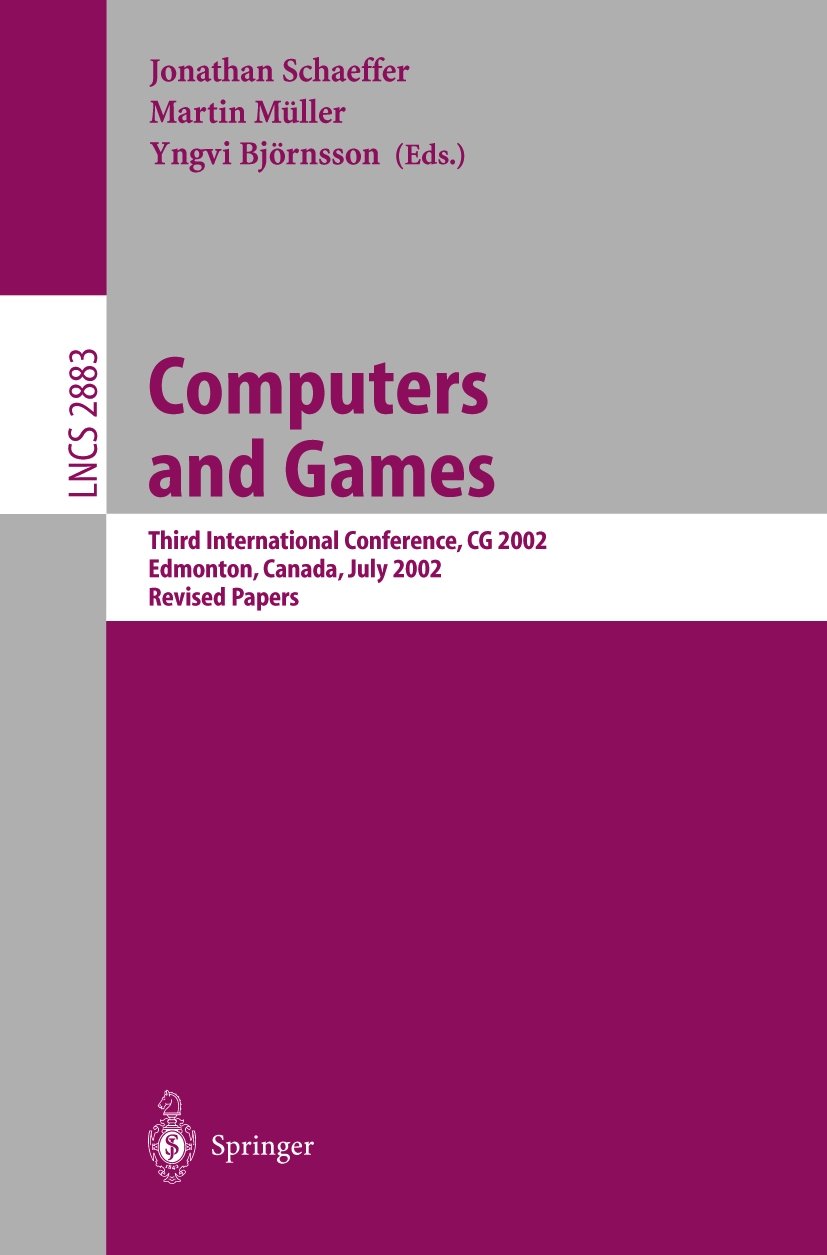Computers and Games
by Jonathan Schaeffer
2020-04-19 20:29:20
The Computers and Games (CG) series began in 1998 with the objective of showcasing new developments in arti?cial intelligence (AI) research that used games as the experimental test-bed. The ?rst two CG conferences were held at Hamamatsu,Japan(1998,20...
Read more
The Computers and Games (CG) series began in 1998 with the objective of showcasing new developments in arti?cial intelligence (AI) research that used games as the experimental test-bed. The ?rst two CG conferences were held at Hamamatsu,Japan(1998,2000).ComputersandGames2002(CG2002)wasthe third event in this biennial series. The conference was held at the University of Alberta(Edmonton,Alberta,Canada),July25–27,2002.Theprogramconsisted of the main conference featuring refereed papers and keynote speakers, as well as several side events including the Games Informatics Workshop, the Agents in Computer Games Workshop, the Trading Agents Competition, and the North American Computer Go Championship. CG 2002 attracted 110 participants from over a dozen countries. Part of the successoftheconferencewasthatitwasco-locatedwiththeNationalConference of the American Association for Arti?cial Intelligence (AAAI), which began in Edmonton just as CG 2002 ended. The CG 2002 program had 27 refereed paper presentations. The papers ranged over a wide variety of AI-related topics including search, knowledge, learning, planning, and combinatorial game theory. Research test-beds included one-player games (blackjack, sliding-tile puzzles, Sokoban), two-player games (Amazons, awari, chess, Chinese chess, clobber, Go, Hex, Lines of Action, O- ello, shogi), multi-player games (Chinese checkers, cribbage, Diplomacy, hearts, spades), commercial games (role-playing games, real-time strategy games), and novel applications (Post’s Correspondence Problem).
Less
